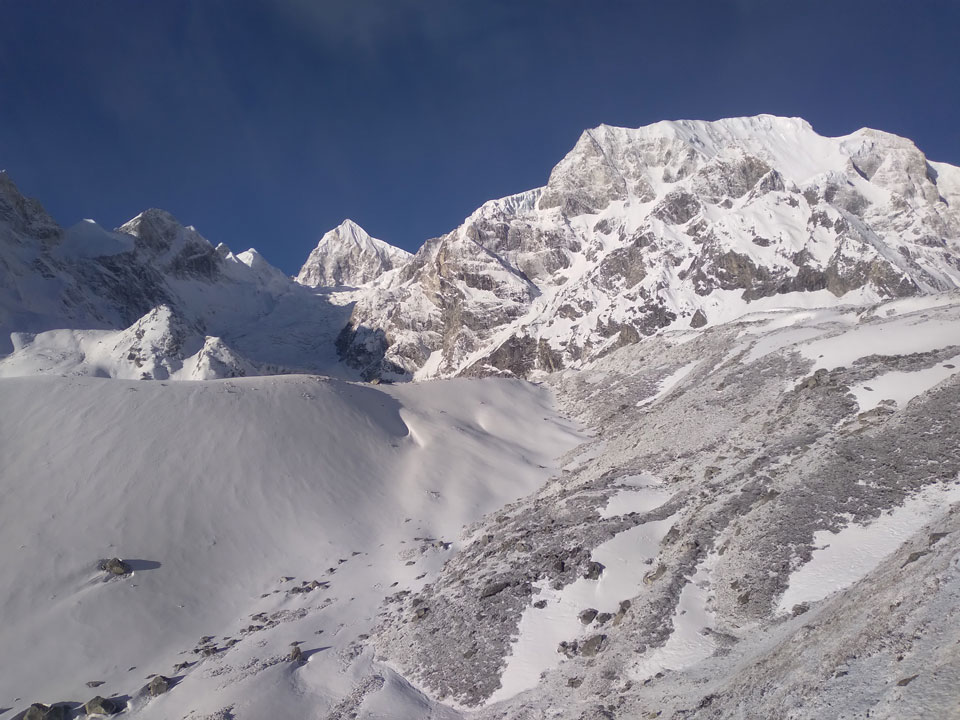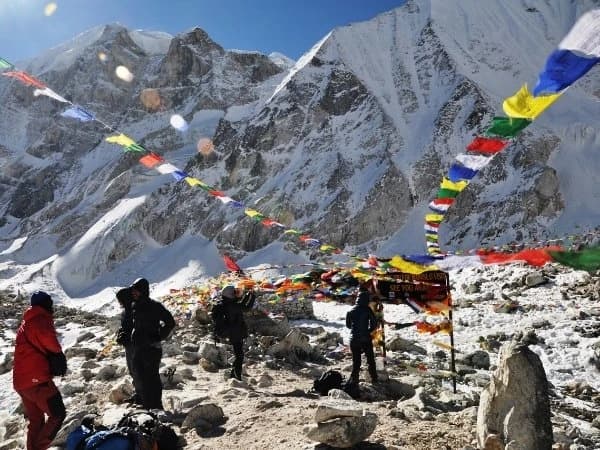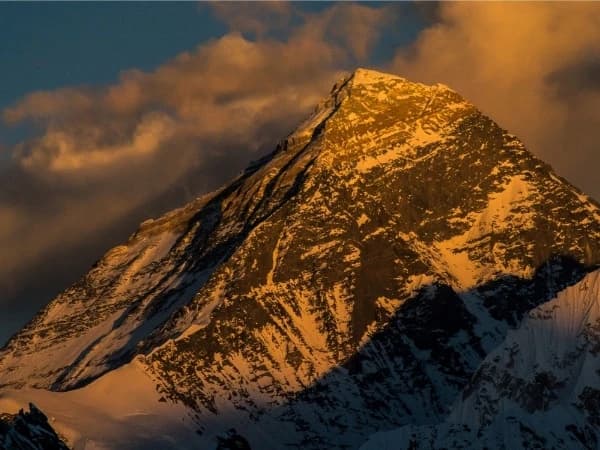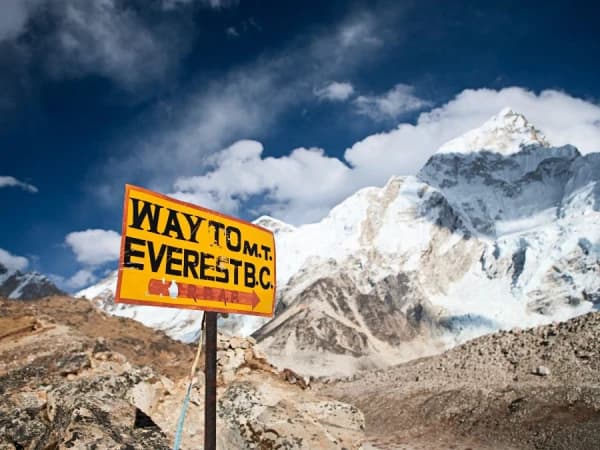What is Altitude Sickness?
Altitude sickness occurs when the body doesn’t get proper oxygen due to thinner air at high altitudes or trekking in the Himalayas. The symptoms of altitude sickness occur as you ascend over 3000m, and the risk increases as you go up. Sometimes the issue of high-altitude sickness can lead the life-threatening conditions like High-Altitude Cerebral Edema (HACE) and High-Altitude Pulmonary Edema (HAPE).
Type of Altitude sickness that trekkers can face during the Manaslu Circuit Trek.
Acute Mountain Sickness (AMS)
- AMS occurs when the body struggles to adjust to reduced oxygen, and symptoms like headache, fatigue, and dizziness.
High-Altitude Cerebral Edema (HACE)
- HACE symptoms like loss of guidance, leading, confusion, swelling in the brain, and unconsciousness.
High-Altitude Pulmonary Edema (HAPE)
- a more severe condition in which fluids accumulate in the lungs, causing shortness of breath, fatigue, and cough.
Altitude Sickness on Manaslu Circuit Trek
Trekking in Manaslu is the best remote trekking trail in Nepal, across the Larkya Pass (5106m), the highest point of the Manaslu Circuit Trek. The 11-day Manaslu circuit Journey faces the challenging off-beaten path and ascends above 3000m within a short time. The rapid ascent can cause altitude sickness, a real concern.
Altitude sickness is a major issue that every trekker considers while embarking on high-altitude trekking. Mountain sickness prevention is a crucial factor in a worthwhile adventure.
Symptoms of Altitude Sickness
The symptoms of altitude sickness can vary depending on the severity of the condition. The common stage is fatigue and headache, which can recover quickly.
Common symptoms of AMS
- Head ace
- Vomiting and nausea
- Dizziness
- Fatigue
- Insomnia
Common symptoms of HACE and HAPE
- Coughing
- Chest pain
- Confusion, Loose guidance, and unconsciousness
- Shortness of breath
How can to prevent altitude sickness on Manaslu Circuit Trek?
Mountain sickness prevention during the Manaslu Trek requires careful planning and a comprehensive high-altitude trekking guide. As a Recreation Holidays expert guide, here are some key steps to prevent altitude sickness.
- Ascend Slowly
- Take a proper rest
- Stay hydrated
- Eat light and nutritious food
- Monitor your physical condition
- Listen to your body
- Know the symptoms of AMS, HAPE, and HACE
- Use necessary meditation
By following this short guideline, you can reduce the risk of altitude sickness and enjoy the diverse wildlife, landscape, and cultural significance of the Manaslu trek.
Safety Tips for Manaslu Circuit Trek
Here are some safe trekking tips in high altitudes to help you have a smooth and enjoyable Manaslu Trek.
- Know when to descend
- Trek with a guide and follow the instructor
- Train yourself before the trek
- Avoid smoking and alcohol
- Know emergency evacuation procedures
- Buy travel insurance
- Respect local culture and customs
With these tips and proper preparation can enjoy a safe and rewarding trek to Manaslu Circuit. One of the most scenic and culturally reach treks in Manaslu.
How to stay safe and enjoy during the Manaslu Circuit Trek?
The Manaslu circuit trek offers the unparalleled scenic beauty of ancient villages in Nepal. However, altitude sickness is a serious condition in high-altitude trekking. To prevent it, it is crucial to understand its symptoms, such as headache, vomiting, fatigue, and shortness of breath. Drink more water and nutrient-rich food, take proper rest, and use the necessary medication as required.
Altitude Sickness is a major concern of the Manaslu Circuit Trekking, but with the right perpetuation, you can reduce the risk of high altitude sickness and ensure your enjoyable trekking experience. Proper acclimation, like staying hydrated, listening to the body, and maintaining a walking pace, is necessary to understand to prevent altitude-related issues. Hiring an experienced guide and using proper gear and equipment for trekking contribute to your safety. Follow the above steps, be well prepared, and enjoy the stunning beauty of the Manaslu Circuit.

FAQS about altitude sickness on the Manaslu Circuit Trek
What is the best altitude to start acclimatization during the Manaslu Circuit Trek?
- Start acclimatization from 2500 meters slowly and try to avoid quick altitude gain of more than 500m above 3000m from sea level. For the Manaslu circuit Trek, Samagaun is the best location for taking a rest as it also offers outstanding surroundings.
How do I know if I have altitude sickness?
- Altitude sickness is a serious issue at high altitudes. You know that symptoms like headache, fatigue, difficulty breathing, dizziness, vomiting, and loss of guidance at high altitude trek are some symptoms. You must follow the guide instructions to avoid the issue. Like using proper medication or dropping down to a lower elevation for rest.
What should I do if I experience some altitude sickness symptoms during the Manaslu trek?
- If you feel some symptoms like shortness of breathing, unconsciousness, or chest pain, immediately inform your guide to move down to a lower elevation and look for medical support. If it is an emergency like HAPE or HACE, it can be life-threatening, so ask for emergency rescue.
How long should I acclimate during the Manaslu Circuit Trek?
- Acclimation during exploring high altitudes is crucial. It can be several days. Typically, in the Manaslu Trek, 2 days are common for taking rest to avoid altitude sickness and for easily crossing the high passes.
Is there any risk besides altitude sickness on the Manaslu Trek?
- If you follow the proper guidelines of the travel company, guides, and local people's advice, there will be nothing risky. But sometimes common colds and weakness are not big which you can manage them by using proper gear, medication, and hours of resting.
Have you done any trekking in Nepal? Share your experience in a comment with us.






